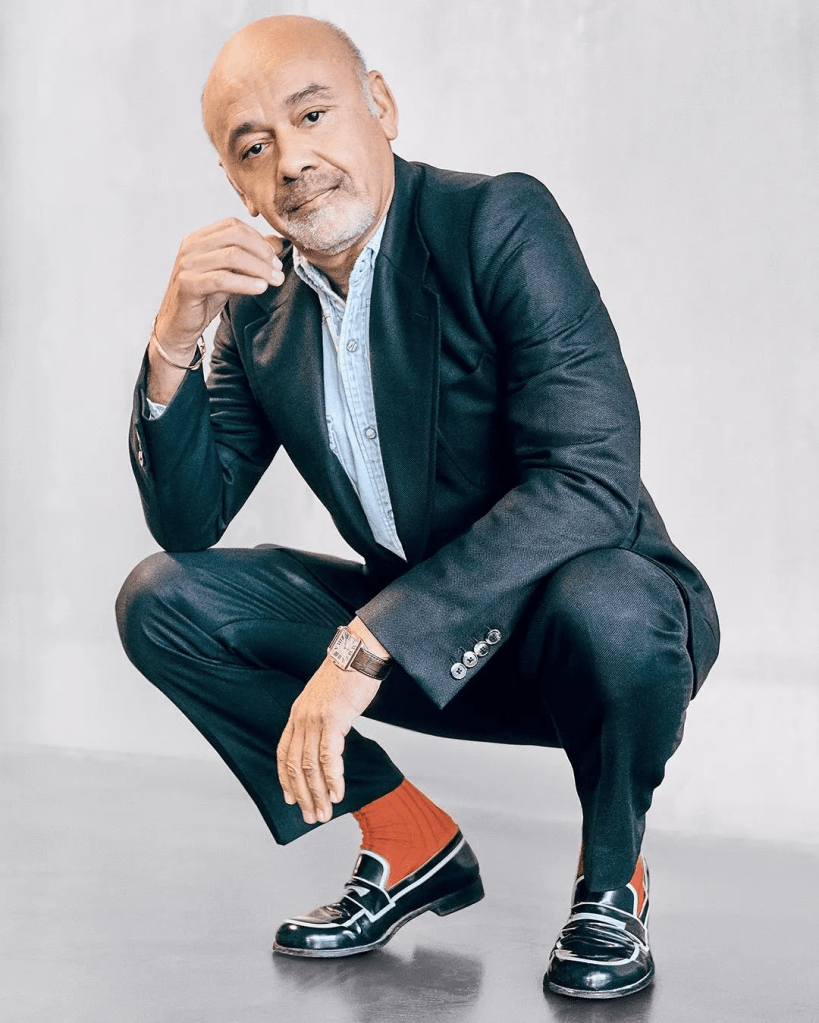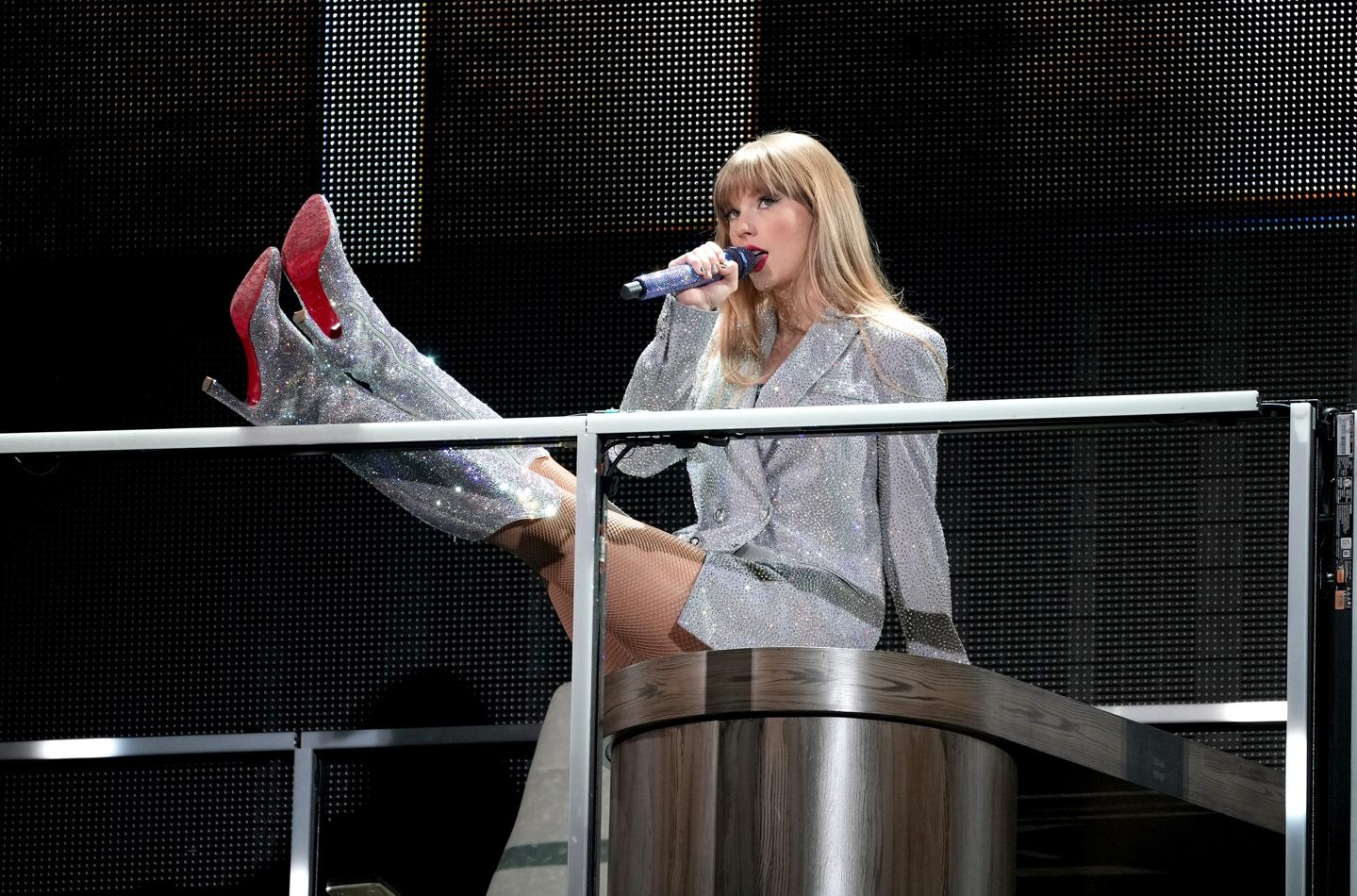How the famed French cobbler turned his signature red soles—worn by Beyoncé, Taylor Swift and anyone who can afford them—into serious gold.

After four decades of keeping his well-heeled clients in his iconic red-soled heels, shoe designer Christian Louboutin is now a billionaire. The 61-year-old designer is stepping into the billionaire ranks thanks to his eponymous fashion brand. While still best-known for its towering stilettos and perilous platforms, the Louboutin brand has expanded into sneakers, bags, and beauty products, as well as lines for men and children.
The company was valued at $3.2 billion last year by Exor, the investment company of Italy’s Agnelli family, which bought a 24% stake in 2021 for about $650 million. Louboutin still owns 35%—which Forbes values at $1.1 billion. That stake makes up most of an estimated $1.2 billion fortune that includes other investments such as the Vermelho Hotel, a luxury resort he opened in southern Portugal last year. Representatives for Louboutin didn’t respond to requests for a comment on the valuation.
“I started the company with my two best friends,” Louboutin said in a 2021 interview with The Business Of Fashion. “I never thought of selling a part of the company. I never thought of anything else other than designing pretty shoes.”

These Boots Were Made for Working: Louboutin designed different shoes and boots for every era of Taylor Swift’s tour.
kevin mazur/getty images
Those pretty shoes—which start at about $800 a pair and can quickly reach into the mid-thousands—soon found their way to the feet of the world’s most beautiful people. Louboutin opened his first Paris boutique in 1991 and one of his first celebrity customers was Princess Caroline of Monaco. Since then, his red soles have become a fixture on the red carpet. At this year’s Golden Globes, his shoes were worn by an eclectic range of stars, including Selena Gomez, Lenny Kravitz, Heidi Klum and Simu Liu.
They have also become pop culture touchstones. On Sex and the City, Sarah Jessica Parker’s heel-addicted Carrie Bradshaw famously wore mismatched Loubis and started a trend. And Cardi B immortalized his heels in her 2017 breakout hit “Bodak Yellow.” (“These expensive, these is red bottoms, these is bloody shoes.”)
Last year, both Beyoncé and Taylor Swift wore Louboutins during their respective concert tours—he designed a different shoe for each Swift era: loafers for Red, knee-high boots encrusted in rhinestones for Midnights—and Margot Robbie wore a pair of his metallic mules to the London Premiere of Barbie. Despite the sea of pink, the soles of her shoes remained Louboutin red, which has its own Pantone code: 18-1663TP.
Born and raised in Paris, Louboutin came from a working-class background. His father was a cabinet maker from Brittany, while his mother stayed home raising him and three older sisters. (Many years later, at 51, he discovered that his father was actually an Egyptian man his mother had met in her early 40s.) When he was 10, Louboutin visited Paris’ Museum of African and Oceanic Art and saw a sign that forbade women from wearing stilettos. That didn’t sit right with the young Louboutin, kickstarting a lifelong obsession with shoes.

Best Feet Forward: Celebrities—including Rihanna, Oprah, Katy Perry and Beyoncé—love kicking up their Louboutin heels.
From left: Kevin Mazur/Getty Images; Frederick M. Brown/Getty Images; Jeff Kravitz/Getty Images; Jason Merritt/Getty Images
“I was born into a very feminine environment with my sisters, who helped me to understand women and definitely led me to what I’m doing,” he told Forbes in 2016. “I always used to draw shoes growing up but, frankly, I never thought creating new shoes could be a profession.”
At 16, he was expelled from school and traveled to India before returning to Paris to intern at the Folies Bergère, where he began designing shoes for the dancers. Then came a stint with French shoe designer Charles Jourdan, followed by freelance work for Chanel and Yves Saint Laurent. In 1988, he was hired by Roger Vivier, best known for inventing the stiletto in the 1950s.
“When I was about 16, someone gave me a book on the footwear designer Roger Vivier with a beautiful golden cover,” Louboutin told Forbes in 2016. “I thought, How amazing—it really is a career. You can make a living designing shoes!”
He then took a brief hiatus from footwear—designing terraces in New York and gardens in France—before opening his first shop in Paris in 1991 with the help of two friends, Henri Seydoux and Bruno Chambelland. (Seydoux sold his stake in the 2021 deal with Exor.)
The famous red soles came to him in 1992, when he was disappointed by a shoe prototype in his atelier and saw that his assistant was polishing her nails. “It took me a while to figure out it was because the sole was black,” Louboutin told Forbes in 2016. “I grabbed my assistant’s nail polish and painted the soles red.”
From his first boutique in the Galerie Véro-Dodat, a 19th-century neoclassical shopping arcade a short walk away from the Louvre, the brand continued to grow, opening boutiques in New York in 1994 and London in 1997. Over the next decade, Louboutin’s heels would be spotted everywhere from Princess Diana’s funeral to Madonna’s music videos. He trademarked the red sole in France in 2000, and three years later he started selling bags, followed by men’s shoes in 2009.
Today, Louboutin has more than 160 boutiques in 32 countries across 4 continents, including 35 in the United States, 23 in Japan and 20 in China. “Louboutin is a rare example of a footwear brand which is seemingly able to expand into other product categories, including apparel and handbags,” says Luca Solca, senior research analyst for luxury goods at Bernstein.
Over the years, his company has aggressively protected its red sole in numerous lawsuits around the world. That led to clashes with industry titans in lawsuits against Zara (owned by billionaire Amancio Ortega’s Inditex)—which it lost—and with Yves Saint Laurent (part of Bernard Arnault’s luxury conglomerate LVMH) which it partly won. Last year, Louboutin won trademark cases in Brazil and India and filed a lawsuit alongside tech giant Meta against a Mexican counterfeiter selling fake Louboutins on Facebook and Instagram.
His personal real estate portfolio also spans the globe. He owns an expansive apartment with red mahogany floors near the Opéra Garnier in Paris; a house with a sailboat in Luxor, Egypt; apartments in Los Angeles and Rio de Janeiro; a 17th-century home in Aleppo, Syria, that was damaged in the civil war; a 350-acre compound in Melides, Portugal, near his hotel; and a 7-bedroom villa in Lisbon and the 13th-century Château de Champgillon in the French countryside (where he reportedly keeps a collection of 8,000 shoes), both co-owned with Chambelland.
Even as he’s moved beyond heels into sneakers and makeup, Louboutin himself remains essential to the brand’s success. He designs the autumn and winter collections at his French château or in Portugal, and works on the spring and summer collections in Egypt or Brazil. The sketches are then manufactured into shoes at factories in Italy and Spain.
“I first draw. I start sketching with a pen. I isolate myself for at least two weeks and draw,” Louboutin told Forbes in 2016. “When it’s a winter collection, I go somewhere cold, and for summer, I go somewhere warm. I’m receptive to the light and heat.”

Hamming It Up: Miss Piggy wore Louboutins to sit on Jimmy Fallon’s couch in 2011.
Theo Wargo/NBC Universal/Getty Images
The company produces more than 1 million pairs of shoes a year and as with many luxury fashion brands, the high prices are key to its staying power. “The financial markets like luxury companies because they have higher margins, high returns on capital and high pricing power,” says Joren van Aken, an analyst at Belgian investment bank Degroof Petercam. “After all, wealthy people will not stop buying luxury items whether inflation is 2% or 5%.”
After posting record profits during the pandemic, the luxury goods industry saw slower growth in 2023. Shoes were the slowest-growing luxury category last year, expanding by only 2% to 3%, according to Bain & Company. That’s impacted Louboutin, too. The firm recorded net profits of $37 million in the first half of 2023, down 51% from the same period in 2022, amid raw material shortages and slow growth in China. Still, the company added 10 boutiques and “continued to deliver top tier profitability,” per Exor’s 2023 half-year report.
Not that Louboutin is ready to put his feet up just yet. In February, his brand announced a new line of sunglasses with Italian eyewear maker Marcolin. And last week, he designed a glittery, disco-themed Bal de la Rose charity gala for his old friend Princess Caroline in Monaco, replete with 59 mirror balls, a performance by Gloria Gaynor, and heels—lots and lots of heels.
This article was first published on forbes.com and all figures are in USD.


